NRAO eNews
Volume Vol#, Issue Iss#
Day# Month# Year#
NRAO eNews
Volume Vol#, Issue Iss# • Day# Month# Year#

NRAO / GBO Status
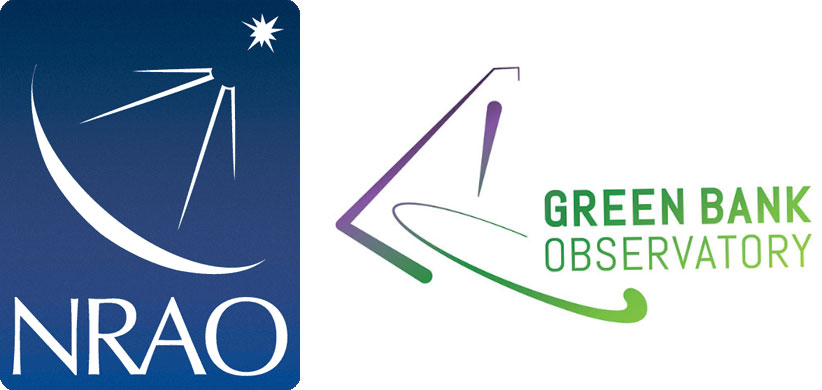
The National Radio Astronomy Observatory (NRAO) and the Green Bank Observatory (GBO) are in the second week of Infectious Disease Operating Status (IDOS), and continuing to adjust Observatory operations to address issues that arise. Over the weekend, the Atacama Large Millimeter/submillimeter Array (ALMA) shutdown telescope operations (collecting data), but all archive and user support activities continue, although at reduced efficiency. The North American NRAO/GBO telescopes remain operational. IT systems are performing well. As a team, we are stable in this new environment.
The situation in the U.S. continues to evolve rapidly, and it is not possible to predict when federal, state or other constraints will be relaxed. Although we triggered IDOS owing to schools closing in our site regions, we have just learned that the Virginia school systems will not be returning this academic year; it is likely that West Virginia and New Mexico may soon follow.
A good question is: What will be the trigger for NRAO/GBO to return to normal operating status? At this point, I cannot answer that. For now, our default plan is to resume normal operations sometime in early / mid-April, but I expect to announce an IDOS extension within the next few weeks.
State governors have just ordered the closing of all non-essential businesses in New Mexico, Virginia, and West Virginia. For the time being, we are asserting that this closure of non-essential businesses does not apply to our federally-funded NRAO/GBO/AUI activities.
This is a stressful time, with rapid changes. Between the time I started this note and finished the first draft, the state of Virginia closed schools and non-essential businesses for the remainder of the academic year, and West Virginia shuttered non-essential businesses. Though every day is a new assault on our normal lives, we are successfully holding our lives and Observatories together and are fortunate to have resources to support our families and maintain our mission.
The current status of all the AUI Observatories – NRAO (VLA, VLBA, ALMA) and GBO (Green Bank Telescope) – is available at the NRAO science website homepage.
Upcoming Events

ALMA Ambassadors Proposals Preparation Workshops
Mar 6 - Apr 7, 2020 | Online

[Tentative] Compact Objects and Energetic Phenomena in the Multi-Messenger Era
Jul 14 - 16, 2020 | Saint Paul, MN
Postponed Events
The following NRAO-related conferences have been postponed owing to concerns about the COVID-19 coronavirus. Please consult the conference websites (links below) for details.

NRAO Community Days at NAOJ
Mar 31 - Apr 1 | Mitaka, Japan

From Cells to Galaxies 2020: Exploring the Synergies between Radio Astronomy and Medical Imaging
May 5 - 7, 2020 | Santa Fe, NM

17th Synthesis Imaging Workshop
May 13 - 20, 2020 | Socorro, NM

Multiphase Gas in Galaxy Groups
Jun 23 - 25, 2020 | Charlottesville, VA
ALMA Program News

ALMA Cycle 8 Call for Proposals Open
The ALMA Director, on behalf of the Joint ALMA Observatory (JAO) and the partner organizations in East Asia, Europe, and North America, is pleased to announce the ALMA Cycle 8 Call for Proposals for scientific observations to be scheduled from October 2020 to September 2021. For Cycle 8 the JAO anticipates having 4300 hours of approved science time on the 12-m Array and 3000 hours on the Atacama Compact Array, also known as the Morita Array. ALMA Cycle 8 proposal submission opened at 15:00 UT on Tuesday, 17 March 2020.
The Cycle 8 proposal submission deadline has been revised and is NO EARLIER than 15:00 UT, 19 May 2020.
ALMA is monitoring the COVID-19 pandemic and the evolving global situation. Updates will be posted to the ALMA Science Portal. The next community update will be NO LATER than 21 April 2020 regarding the Cycle 8 Call for Proposals status and the support for the scientific community at the ALMA Regional Centers.
For additional questions regarding the Cycle 8 Call for Proposals, contact the ALMA Helpdesk.
ALMA Ambassadors Events Go Virtual
Due to the COVID-19 outbreak, all the ALMA Ambassador events will now be held remotely. Please visit the NRAO science website for an updated list of ALMA Ambassador events.
There will be one event per weekday 19 March – 3 April in preparation for the ALMA Cycle 8 proposal deadline. Registration is encouraged to receive updates, especially if you have questions, but is not required.
ALMA Cycle 7 Observing Suspension
Due to the COVID-19 outbreak, and to ensure the safety of all staff, ALMA management has temporarily suspended ALMA Cycle 7 science observing, effective Thursday, 19 March 2020. A minimal crew will ramp ALMA down to reduced operations, and the array will be stowed. Principal Investigator science observations will resume when it is deemed safe.
Call for Proposals for ALMA Development Projects
The NRAO invites interested parties to submit proposals for Projects to Upgrade the Atacama Large Millimeter/submillimeter Array (ALMA). A Call for Proposals for Development Projects will be released on or about 15 July 2020. The ALMA Development Projects Implementation Plan is available for review and describes the fundamental processes for project proposal and review. The call for proposals will be open to the North American (NA) ALMA Operations Partnership, which is defined as the community of astronomers and scientists in related fields from North American ALMA partner countries. Projects will be funded for Cycle 8 in an integrated, multi-year award. Priority will be given to those Projects which align with the ALMA Development Roadmap (ALMA Memo 612). Study topics of particular interest to the NA ALMA Partnership include larger bandwidths and improved receiver sensitivity, such as would be provided by an upgraded correlator and receivers.
Second Generation Correlator proposals must meet the specifications of the Correlator Working Group report, the first draft of which is expected by the proposal call date. All proposals and resulting instrumentation must comply fully with ALMA standards for system interfaces, interoperability, and documentation. NRAO staff can assist in meeting the above standards, upon request and with sufficient notice.
The deadline for proposals will be 15 October 2020. Project execution can only begin after adjudication at the November 2021 ALMA Board Meeting. If you are planning or even considering proposing in response to this Call, you must file a Notice of Intent before 30 August, 2020; in contrast to previous Calls, submission of an NOI is mandatory. Additional details will be released with the Call in July 2020.
VLA & VLBA News

On 13 March, the NRAO announced the closure of its facilities in New Mexico, Virginia, and West Virginia in response to school closures in those states due to concerns over the COVID-19 coronavirus. Despite the NRAO facility (i.e. building) closures, science observations with the Jansky Very Large Array (VLA) and the Very Long Baseline Array (VLBA) continue.
A small crew, such as telescope operators and VLBA site technicians, support observing as usual, while the remainder of the New Mexico staff work from home. They are accessible via email and endeavor to provide their telescope and user support services remotely. Scientific and technical staff are also on call, primarily during daylight hours, to troubleshoot and repair any critical failures that may occur. Due to these remote support arrangements, telescope reliability and observing efficiency may decline in the near future. We appreciate our users understanding and support of our health initiatives as we continue to support science observations with the VLA and VLBA.
Visit the VLA and VLBA websites for the latest information on their current operational status.
Upcoming Sched Release & VLBA Correlator Model Update
The "Sched" program, which is used to produce observing schedules for the Very Long Baseline Array (VLBA), the High Sensitivity Array, and many other Very Long Baseline Interferometry (VLBI) observing systems around the world, will have a new release, version 11.6, very shortly.
This release comes without any significant changes to the actual software. Its main changes are updates to catalogs and setup files. The bundled source catalog has been updated based on the third International Celestial Reference Frame (ICRF3) solutions with flux densities provided by the Radio Fundamental Catalog (RFC). The coordinates of many antennas, including those of all VLBA antennas, have been updated to improved values based on the recent GSFC 2019d Geodetic Solution. The changes in positions, compared to the previous catalog, for VLBA stations, are at the 1-2 cm level. New setup files have been introduced that implement new 4 Gbps recording modes. The vlbi@nrao.edu email list will announce the availability of the new release.
The VLBA correlator will switch to correlation using Goddard's CALC version 11 delay model for projects scheduled with the new Sched release. Support for the previous delay model, CALC 9.1, will be discontinued at a date to be determined in the future, but at least one year from now. A comparison of CALC 9.1 and CALC 11 was performed and documented in VLBA Sensitivity Upgrade (VSU) memo 45. Users in the middle of long-term astrometric observing programs should continue to use Sched 11.5 to ensure continuity of the delay model. All new projects should switch to using Sched 11.6 as soon as possible.
Projects requesting the current software versions (Sched 11.5 and CALC 9.1) should add a line to their *.key file similar to:
note1 = 'Please schedule with Sched 11.5'
This will ensure the new version of Sched is not run. The choice of CALC version will be made automatically based on the sched version used.
References:
ICRF3, RFC, VSU memo 45
ngVLA Project News

Compact Objects and Energetic Phenomena in the Multi-Messenger Era
On 14-16 July 2020, the NRAO and the ngVLA Project tentatively plan to convene a science conference titled Compact Objects and Energetic Phenomena in the Multi-Messenger Era in Saint Paul, MN, USA. The deadline to submit oral abstracts and requests for travel support is 10 April. The conference organizers are monitoring the COVID-19 situation and will promptly notify the community if it is decided to postpone the conference.
Dr. Anne Kinney, head of the National Science Foundation’s Directorate for Mathematical and Physical Sciences, will give a keynote talk to open the conference. Kinney is responsible for determining how the Directorate pursues NSF’s 10 Big Ideas for future investment. One of the Big Ideas, Windows on the Universe, is focused on maturing the nascent field of multi-messenger astrophysics. Nature Astronomy has commissioned a conference report and will be sponsoring a prize competition for poster presentations.
Young Radio AGN in the ngVLA Era

VLBA continuum images of young, compact radio AGN with extents of tens of parsecs. The high sensitivity and angular resolution of the ngVLA will facilitate deep, spatially-resolved surveys of compact radio jets with comparable extents in a wide range of systems, providing new insights into the energetic impact of young radio jets under a variety of host galaxy conditions and properties.
[click to enlarge]
Young, compact radio sources associated with accreting supermassive black holes represent a poorly understood phase in the life cycles of jetted active galactic nuclei (AGN). These objects have (re)ignited their central engines within the past 100-10,000 years, resulting in sub-galactic jet extents of ~ 10 parsecs to a few kiloparsecs. Young radio AGN may hold vital clues about many open questions regarding radio jet triggering, duty cycles, and the role of radio jets in imparting AGN feedback to their host galaxies. Therefore, the investigation of these newborn radio AGN can give us a direct view of many transient processes and better inform simulations of galaxy formation and evolution.
The broad frequency coverage (1.2-116 GHz) and improved sensitivity (10X better than the Jansky Very Large Array) of the next generation Very Large Array (ngVLA) will provide a unique parameter space to conduct statistical studies of young radio AGN across a broad range of AGN luminosities and redshifts (Nyland et al. 2018, Patil et al. 2018). The Main Array will provide the sub-arcsecond resolution needed to resolve the sub-kiloparsec structures of sources found at z ~ 1-6, while the Long Baseline Array will provide the finer resolution needed to resolve the parsec scale radio emission at z ~ 2 in the highest frequency band. In combination with low-frequency (< 1 GHz) observations from prospective instruments such as the Square Kilometre Array and next generation Low Band Observatory, the ngVLA will enable the robust characterization of the spectral energy distributions of young radio AGN, which will place constraints on their ages and evolutionary stages. Ultimately, the ngVLA will enable us to obtain the structural, spectral, and polarimetric information on radio jets necessary to quantify their energetic impact on their hosts and improve our understanding of their role in galaxy evolution.
This article continues a regular feature intended to highlight contributions to the ngVLA Science Book. We are especially interested in showcasing work done by early-career researchers. Anyone wishing to volunteer to author a feature should contact Joan Wrobel.
New Assistant Director for Science Support & Research
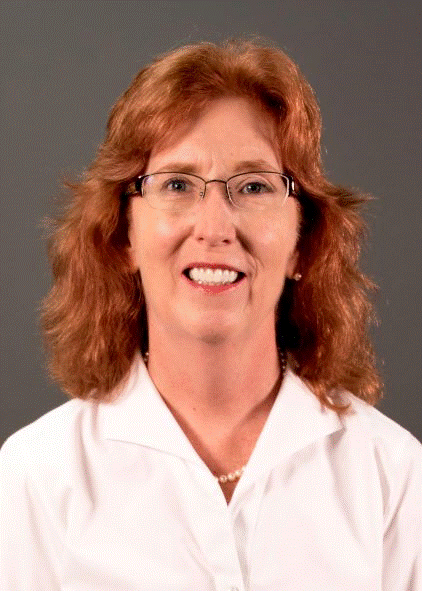
Prof. Patricia Henning
I am pleased to announce that Prof. Patricia (Trish) Henning will be the next NRAO Assistant Director for Science Support and Research (AD/SSR), initially based primarily in Charlottesville, but with significant presence in New Mexico.
Dr. Henning began her research career as a postdoctoral research associate in the Netherlands at Dwingeloo/Netherlands Foundation for Research in Astronomy, after gaining her Ph.D. in Astronomy at the University of Maryland. Later, she moved to the University of New Mexico (UNM) as an Assistant Professor (eventually full Professor), held the position of Director of the UNM Institute for Astrophysics for more than fifteen years, and most recently was the UNM Associate Vice President for Research. In these roles, Dr. Henning has successfully continued her research career while taking on significant administrative responsibilities, and has been highly active in public outreach and mentoring. She has held several senior committee roles throughout her career, including Head of User Programs for the Long Wavelength Array, Chair of the U.S. Square Kilometre Array Consortium, and NRAO User Committee member.
Her time working in Europe, the U.S., China, South Africa, and Australia will bring a wealth of experience in administration, understanding of radio astronomy research, experience with facilities, project management, and recruitment and mentoring of scientists and students. Her collaborative approach, with a focus on respect, communication, and relationships, will greatly assist her in supporting the scientific environment and scientific staff here at the Observatory.
I would like to thank Dale Frail for his excellent efforts as interim AD/SSR over the past several months, including handling several key initiatives. Dale will be returning to his outstanding research program focused around time-domain astronomy.
Dr. Henning will arrive in Charlottesville and take up the position as AD/SSR in late August. Please join me in welcoming her to NRAO!
2020 Jansky Fellowships Awarded
The National Radio Astronomy Observatory (NRAO) Jansky Fellowship program provides outstanding opportunities for research in astronomy. Jansky Fellows formulate and carry out investigations either independently or in collaboration with others within the wide framework of interests of the Observatory. The program is open each fall to candidates with interest in radio astronomy techniques, instrumentation, computation, and theory. Multi-wavelength projects leading to a synergy with NRAO instruments are encouraged. We are pleased to announce that five new Jansky Fellows will be joining NRAO in fall 2020.
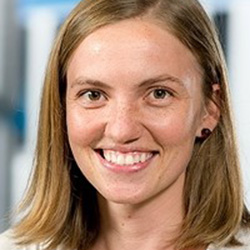
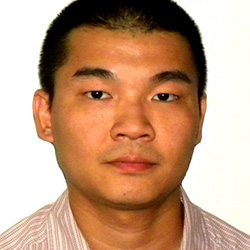
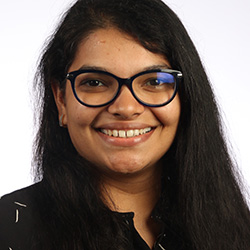

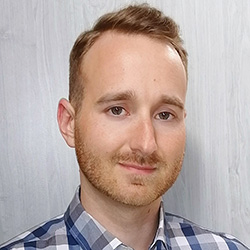
From the Archives
Ellen Bouton

[click to enlarge]
About this month's photo: Honoring the "March Madness" that did not happen in 2020. Over the years, NRAO staff members have participated in a variety of sports, organized in differing degrees from occasional informal games to regular league play: softball, volleyball, golf, bowling, basketball, and even cricket in Socorro in 1980-1981. This photo of basketball in Charlottesville was taken in the late 1970s. Left to right: Bill Wireman, Bob Fromm, Gail Browning, Barry Turner, Stan Hansen, and Betty Stobie.
From the Archives is an ongoing series illustrating NRAO and U.S. radio astronomy history via images selected from our collections of individuals' and institutional papers. If readers have images they believe would be of interest to the Archives, please contact Ellen Bouton.

